Air depuration
Product list
Air is a mixture of odourless gases
Human life and the life of our planet Earth have constructed an equilibrium with the surrounding air and have always managed to keep the natural causes of pollution under control. However, business and industrial development have led to pollution of our atmosphere with disastrous consequences for mankind, present, and in the near future. Keeping gaseous emissions in check represents accepting responsibility for this problem. Society must spread awareness in regards to pollution and the importance of avoiding or limiting its causes. By respecting the limits of concentration of pollutants, good air quality and the safeguard of public health can be guaranteed.
The use of activated carbons to restore a broken equilibrium
The technology of adsorption is based on the ability of activated carbon in handling Volatile Organic Compounds. Industries have used activated carbon for years to improve air quality in the following applications:
- Removal/recovery of solvents or solvent mixtures
- Purification of air effluent from industrial processes
- Separation of gas mixtures
- Purification of natural gas and synthetic gases
- Removal of oil vapours from compressed air
- Deodorization of exhaust air or flue gas
- Removal of harmful substances in air conditioning systems.


The efficiency of an activated carbon depends on numerous factors like temperature, relative humidity, length of contact, velocity and distribution of air through the carbon bed, nature and concentration of contaminants.
The following list facilitates the identification of the adsorption level of various chemical substances in our activated carbon product line for air.
The numbers from 1 to 4 next to each substance signify:
1 = excellent adsorption, approximately 30% in weight
2 = good adsorption, approximately 15% in weight
3 = poor adsorption, usually less than 5% in weight
4 = adsorption is not perceptible.
List of the adsorption capacity of some substances in their gaseous phase on activated carbon:
| 2-Chloroethanol | 1 | Dichloroethane | 1 | Methyl alcohol | 2 |
| Acetaldehyde | 3 | Dichloroethylene | 1 | Methyl bromide | 2 |
| Acetic acid | 1 | Dichloroethyl ether | 1 | Methylbutylketone | 1 |
| Acetic anhydride | 1 | Dichloromonofluoromethane | 2 | Methylcellosolve | 1 |
| Acetylene | 4 | Dichloronitroethane | 1 | Methylcellosolve acetate | 1 |
| Acrolein | 2 | Dichloropropane | 1 | Methyl chloride | 3 |
| Acrylic acid | 1 | Dichlorotetrafluoroethane | 2 | Methyl chloroform | 1 |
| Acrylonitrile | 1 | Diethylamine | 2 | Methylcyclohexane | 1 |
| Adhesives | 1 | Diethylketone | 1 | Methylcyclohexanone | 1 |
| Amines | 3 | Dimethylaniline | 1 | Methylene chloride | 1 |
| Ammonia | 3 | Dimethylsulfate | 1 | Methyl ether | 2 |
| Amyl acetate | 1 | Dioxane | 1 | Methylethylketone | 1 |
| Amyl alcohol | 1 | Dipropylketone | 1 | Methylisobutylketone | 1 |
| Amyl ether | 1 | Disinfectants | 1 | Methylmercaptan | 1 |
| Anesthetics | 2 | Essential oils | 1 | Monofluorotrichloromethane | 2 |
| Aniline | 1 | Ethane | 4 | Naphtalene | 1 |
| Animal odours | 2 | Ether | 2 | Nicotine | 1 |
| Antiseptics | 1 | Ethyl acetate | 1 | Nitric acid | 2 |
| Aromatic foods | 1 | Ethyl acrylate | 1 | Nitrobenzenes | 1 |
| Bacteria | 2 | Ethylamine | 2 | Nitroethane | 1 |
| Benzene | 1 | Ethylbenzene | 1 | Nitrogen dioxide | 3 |
| Benzine | 1 | Ethyl bromide | 2 | Nitroglycerine | 1 |
| Bromine | 1 | Ethyl chloride | 2 | Nitromethane | 1 |
| Butadiene | 2 | Ethylene | 4 | Nitropropane | 1 |
| Butane | 3 | Ethylene oxide | 1 | Nitrotoluene | 1 |
| Butanone | 3 | Ethyl ether | 2 | Nonane | 1 |
| Butene | 3 | Ethylmercaptan | 1 | Octane | 1 |
| Butyl acetate | 1 | Eucalyptol | 1 | Ozone | 1 |
| Butyl alcohol | 1 | Fish odours | 1 | Paint odours | 1 |
| Butyl aldehyde | 2 | Fluorotrichloromethane | 2 | Palmitic acid | 1 |
| Butylcellosolve | 1 | Formaldehyde | 3 | Pentane | 1 |
| Butyl chloride | 1 | Formic acid | 2 | Pentanone | 2 |
| Butylene | 3 | Fragrances | 1 | Pentene | 1 |
| Butyl ether | 1 | Freon | 2 | Perchloroethylene | 2 |
| Butyric acid | 1 | Heptane | 1 | Phenol | 1 |
| Camphor | 1 | Heptene | 1 | Phosgene | 2 |
| Caprylic acid | 1 | Hexane | 2 | Propane | 1 |
| Carbon dioxide | 4 | Hexylene | 2 | Proprionic acid | 1 |
| Carbon disulfide | 1 | Hydriodic acid | 3 | Propyl acetate | 1 |
| Carbon monoxide | 4 | Hydrobromic acid | 3 | Propyl alcohol | 1 |
| Carbon tetrachloride | 1 | Hydrochloric acid | 3 | Propyl chloride | 1 |
| Cellosolve | 1 | Hydrocyanic acid | 3 | Propylene | 3 |
| Cellosolve acetate | 1 | Hydrofluoric acid | 3 | Propyl ether | 1 |
| Chlorine | 3 | Hydrogen | 4 | Propylmercaptan | 3 |
| Chlorobenzene | 1 | Hydrogen sulfide | 3 | Putrescine | 1 |
| Chlorobutadiene | 1 | Hydrogen sulfide | 3 | Pyridine | 1 |
| Chloroform | 1 | Incense | 1 | Resins | 1 |
| Chloronitropropane | 1 | Indol | 1 | Styrene | 3 |
| Chloropicrin | 1 | Iodine | 1 | Sulfur dioxide | 3 |
| Cigarette smoke | 1 | Iodoform | 1 | Sulfuric acid | 1 |
| Cooking odours | 1 | Isoprene | 2 | Sulfur trioxide | 3 |
| Corrosive gases | 3 | Isopropyl acetate | 1 | Tetrachloroethane | 1 |
| Creosol | 1 | Isopropyl alcohol | 1 | Tetrachloroethylene | 1 |
| Creosote | 1 | Isopropyl ether | 1 | Toluene | 1 |
| Crotonic aldehyde | 1 | Kerosene | 1 | Toluidine | 1 |
| Cyclohexane | 1 | Lactic acid | 1 | Trichloroethylene | 1 |
| Cyclohexanol | 1 | Liquid fuels | 1 | Urea | 1 |
| Cyclohexanone | 1 | Lubricant oils and fats | 1 | Uric acid | 1 |
| Cyclohexene | 1 | Medicinal odours | 1 | Valeric acid | 1 |
| Decane | 1 | Menthol | 1 | Valeric aldehyde | 1 |
| Decomposition odours | 1 | Mercaptans | 1 | Vinyl chloride | 2 |
| Deodorants | 1 | Mesytil oxide | 2 | Viruses | 1 |
| Detergents | 1 | Methane | 4 | Xylene | 2 |
| Dichlorobenzene | 1 | Methyl acetate | 2 | ||
| Dichlorodifluoromethane | 2 | Methyl acrylate | 1 | ||
Flue gas purification
Product list
Purification of flue gas from incineration
Powdered activated carbon is used to remove dioxins, furans, and mercury from flue gases.
The degree of adsorption of these pollutants depends upon:
- the raw material from which the activated carbon is obtained
- the degree of activity of the activated carbon
- various physical parameters of the activated carbon
- the method with which the activated carbon is used in an installation
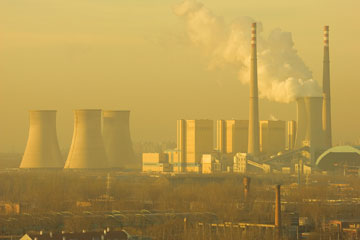
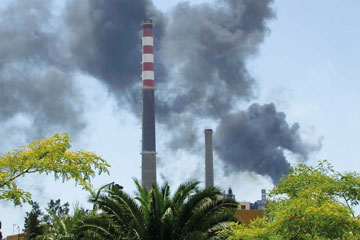
The activated carbons used in this application can be of vegetable matter (coconut, wood, etc.) or mineral matter (lignite, bituminous coal, peat, anthracite, etc.).
The degree of activity calculated analytically by the "Iodine Number" and the "Active Surface Area" is without doubt, very important. In fact, the higher these values are, the better the adsorption performance of an activated carbon is. However, it must be taken into account, that often, in this application, due to a very short contact time between the flue gas and the powdered activated carbon, a high "Active Surface Area" (greater than 600 to 700 m²/g) is not utilized to its best extent.
Physical parameters must not be disregarded either, like the granulometric distribution and the ash content. Of the two, the granulometric distribution is certainly the most important as the capture of dioxins, furans and mercury is achieved through adsorption kinetics, i.e. the flue gas passes through a cloud of powdered activated carbon which has been injected into a reactor or into a conduit for the passage of the flue gas. The finer the grain size, the more compact and suspended the cloud remains and the greater the probability of contact with the particles of the pollutants. We advise using powdered activated carbon with an average grain size of 20 to 25 microns and a maximum grain size of 100 to 150 microns.
High ashes (greater than 10%) are not recommended as they involve a reduction in the "Active Surface". This parameter, if high, identifies the regenerated activated carbons, which in addition to a lower yield can even even contain high volatile substances (greater than 5-6%) and therefore increase the possibility of autoignition at high temperatures (greater than 150°C). The average dosage of a powdered activated carbon can vary between 50 and 200 mg/Nm³ of fumes produced; the right dosage depends not only on the type of activated carbon used but also on the dosing system and above all on the concentrations of incoming pollutants which should always be monitored before choosing the activated carbon to be used. Finally, a parameter to be taken into consideration in the storage of powdered activated carbon in silos is the explosive class in ST1 according to method VDI2263, which should always be declared by the manufacturer/retailer.
Water treatment
Product list
Adsorption is widely used in the treatment of water and activated carbon is the most widely used adsorbent for the removal of numerous organic contaminants. In the last few years, the technology pertaining to its use has widely developed, basically in the following applications:
Drinking Water Treatment
- Dechlorination
- Elimination of unpleasant tastes and odours
- Adsorption of pesticides and triazines
- Removal of hydrocarbon chlorides
- Adsorption of surfactants
- Emergency situations of accidental pollution

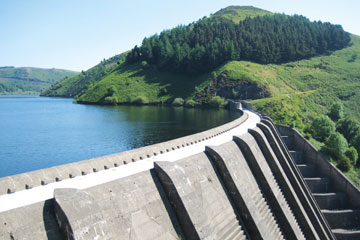
Wastewater Treatment
- Elimination of toxic compounds
- Lowering COD (chemical oxygen demand) to regulation level
- Removal of colour and odours
- Avoiding the formation of foam
- Favouring the conditioning of sludge in biological treatment plants
- Treatments of dechlorination and deozonization
- Filtration of swimming pool and aquarium water
When there are combined needs where quantities of activated carbon can vary greatly, a precise diagnosis is necessary to discover what can be reasonably obtained from the activated carbon used and the means to achieve the desired objective.
It should be pointed out that an activated carbon made up of solely one kind of porous structure does not exist. Different raw materials and their thermal or chemical activation can only lead to a porous structure where a certain type of porosity is dominant. Macro, meso and micropores are all present in carbon and can cause a phenomenon of molecular sieving that influences the selection of a particular activated carbon over another and the type of process to be used, given the competitiveness that exists between the different molecules to be adsorbed.
Microscopic algae and humic acids respond preferably to macropores and a portion of mesopores.
Dyes and tannins are adsorbed mainly by mesopores.
Microporosity is determinant for the adsorption of detergents, chlorophenols, halogenated hydrocarbons, triazines, etc.
Decolourization of liquid foods
Product list
Food and health are foremost in Man's thoughts and a means of improving his quality of life
Decolourization is almost exclusive to chemical-pharmaceutical industries and to agro-food industries.
Bleaching activated carbon can be used in the following industrial applications:
- decolourization of wine
- decolourization of fruit juices
- decolourization and purification of glucose
- decolourization and purification of oils and fats
- decolourization and purification of chemical-pharmaceutical products
Activated carbon guarantees the possibility of obtaining a final product of pure, constant, and high-performing quality. In the last ten years, the technology regarding activated carbons has made great progress primarily in two directions: improvement in quality and more rational technologies of use with regard to the quality of carbon.
The activity level of activated carbon chosen is very important because depending on the dosage needed, it can weigh heavily on the overall cost, especially when there are costs of handling, filtering, and eliminating sludge.
Before evaluating the adsorbent properties of an activated carbon, we must be sure that it is not a vehicle for impurities capable of interfering with the products to be treated.
The reference regards the organic and mineral impurities often contained in the activated carbons: the first practically nil, considering the temperatures reached in the physical or chemical activation processes; the second, analytically verifiable, are essentially due to the raw material used.
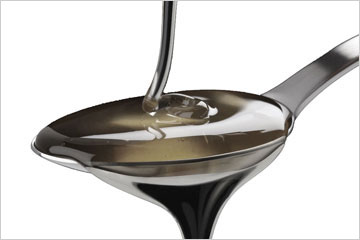

Activated carbons guarantee quality and constancy of the final product
To determine the decolourizing power of activated carbons, among the multitude of testing methods that exist, we would like to point out the following:
Methylene blue index
This establishes how much solution of blue methylene at 0.15% can be decoloured by 100 mg of activated carbon (dry substance) in 5 minutes.
Molasses number
This test has been adopted by manufacturers of activated carbon as the standard method with which the degree of decolourization (decolourizing performance) is measured.
Principle
The decolourization of a standardized molasses solution with activated carbons is compared colourimetrically to the decolourization of a standard carbon (measurements of photoelectric extinction). With this method, the decolourization performance of different types of activated carbon can be established. Under conditions reflecting reality, the quantity of each type of activated carbon needed to obtain an equal degree of decolourization can be recorded systematically.
Execution
Different quantities of activated carbon - for example 100, 300, 500, 700 mg - are put into glasses and mixed with 100 ml of the solution to be treated. The solution is brought to 80°C or to an actual temperature of operation. For each type of activated carbon tested, 1 litre of the solution to be treated will also be prepared with a sample without activated carbon and will serve as a control sample. It will undergo the same set of tests and be measured optically. On the basis of similar preliminary tests previously held, it would be best to calculate the amount of activated carbon needed to carry out the tests.
Decolourization
The samples are treated bain-marie at the aforementioned temperatures and are agitated at brief intervals. After approximately 30 minutes, adsorption equilibrium will have been established.
Filtration
Subsequently, the activated carbon is filtered repeatedly until the liquid becomes clear. When necessary, filtering adjuvants are added; for example fossil flour. The clear, filtered liquid is then cooled and brought to room temperature.
Colourimetry
There is a colourimetric comparison between the control solution and the samples tested. A series of measurements is obtained.
From the quantitative relationship resulting between two activated carbons, it is possible to reliably compare cost versus efficiency and therefore, evaluate which types of activated carbon are more inexpensive to use.
Decolourization and purification of oils and fats
Product list
Decolourization and purification of oils and fats with activated bleaching earths and carbon
Oils and vegetable fats contain colours and impurities deriving from carotenoids, chlorophyll, oxidations, etc., which must be removed in order to obtain a high quality final product. Activated bleaching earths remove undesired colours and other impurities like soaps, phospholipids, oxidation from metals, improving the appearance and taste of the final product. Activated carbon, on the other hand, has a dual function: in addition to removing undesired colours, it can adsorb Polycyclic Aromatic Hydrocarbons (PAH).
Carbonitalia handles activated bleaching earth and trades in the entire Mediterranean area. Carbonitalia activated bleaching earth is obtained from Bentonite and Montmorillonite. Carbonitalia monitors the entire manufacturing process with special attention in order to guarantee a final product with a constant quality. This includes the process of activation with sulfuric acid, the washing process, the drying process, and checking the granulometry. The activated earths produced have a high "Active Surface Area" and porosity in order to obtain a correct decolourization and filtration velocity for the majority of oils and fats.
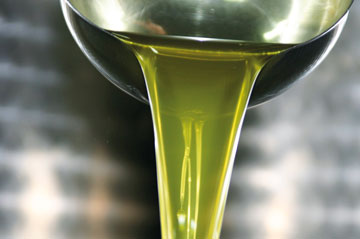
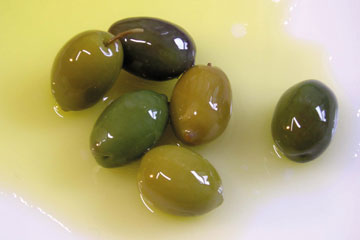
Carbonitalia's bleaching earths have been especially developed to supply both a high- performing and low- dosage product for the customer. Carbonitalia offers on the market a variety of bleaching earths with different activity levels and granulometric distributions to suit different filtration systems and to minimize retention of oils in the earth residue.
Carbonitalia also supplies activated earths with different degrees of acidity in order to obtain, when necessary, a lower residual acidity in the final product when freed fatty acids must be reduced, and a higher residual acidity for those applications when catalytic properties are needed because of an acidic surface.
Bleaching earths can be supplied as follows: packed in small bags stacked on pallets, large bags on pallets, or in bulk by tank truck/trailer.
At the Carbonitalia plant in La Spezia, bleaching earths can be mixed with powdered activated carbon of a high activity level, specially studied for the removal of Polycyclic Aromatic Hydrocarbons from food oils. Bleaching earths and activated carbon can also be mixed at different percentage rates as per customer request in order to obtain a homogenous final product.
Catalysis and chemisorption
Product list
Activated carbon catalyzes some reactions directly. For this use, porosity and surface area are essential factors and must be chosen in function of the reaction to be catalyzed. The powdered or granular activated carbon can be adapted to the reactant where the catalysis will take place, depending on the system to be employed (fixed, mobile, or fluid bed).
Catalytic power exerts itself in a large number of reactions of isomerisation, polymerization, oxidation, halogenation. Activated carbon can also be used as a catalytic support, thanks to its large surface area. Its chemical inertia and its resistance to high temperatures make this particular use even more appealing.
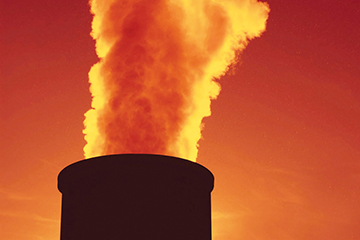
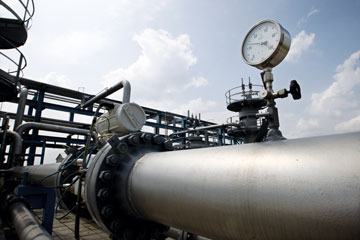
When activated carbon is impregnated with metals, oxides or various metallic salts, it becomes a catalyst that does not agglomerate and that opposes itself to a too rapid volatilization of the impregnant. In some cases, it acts as a promoter, increasing the reaction rate and allows operation at lower temperatures, if necessary.
The development of catalytic processes in chemical industries has increased the interest for activated carbons in this field of application.
Privacy Policy |Cookies Policy
© 2017 Carbonitalia S.r.l. | C.F. e P.IVA: IT01556150496 | Design by Afterbit

